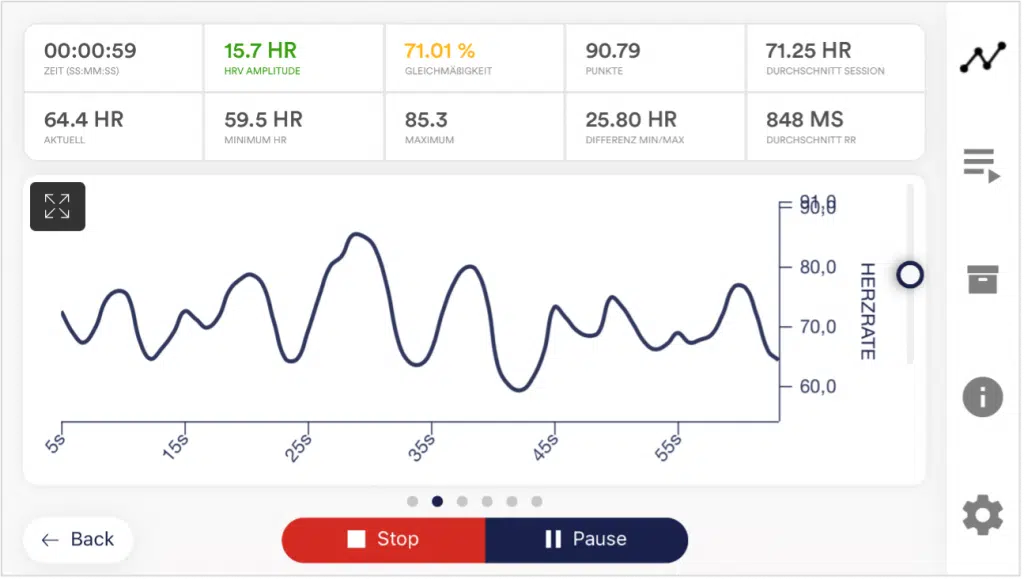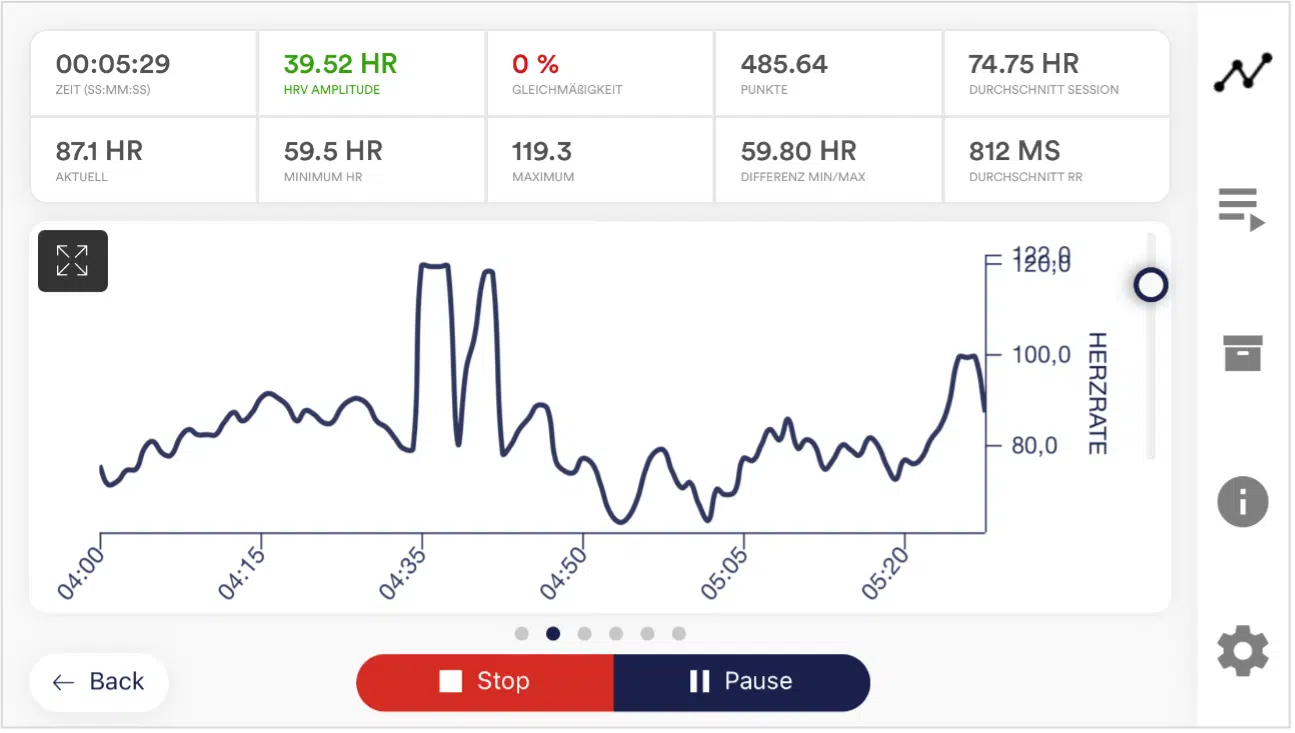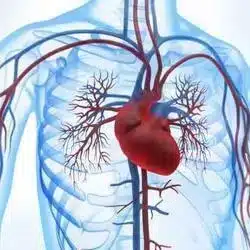
Heart Rate Variability (HRV) Training
HRV Heart Rate Variability Training
HRV training can be performed to reduce stress and its vegetative symptoms. With the goal of increasing heart rate variability (HRV). The aim is to maximize the difference between low heart rhythm and high heart rate during the interplay of inhalation and exhalation, rest and demands. In short, to train and increase heart rate variability. The nervous system, above all the sympathetic and parasympathetic nervous systems, controls these bodily functions vegetatively.
Heart rate variability is fairly universal for biofeedback training. In stress medicine and psychophysiology, HRV biofeedback is used, for example, for depression, heart disease, asthma, anxiety disorders and insomnia. HRV training is also common in coaching and competitive sports. Endurance sports in particular lead to a low pulse rate in the long term. Endurance sports in particular lead to a low pulse rate in the long term. Under physical stress, the heart must beat faster. Athletes know this and use HRV measurements to assess physical exertion. Breathing has a major impact on heart rate changes.
Improving HRV and coherence of breathing and heart can help in reducing tension, managing stress and anxiety. Reacting more calmly and relaxed in everyday life can also be an effect. If you suffer from a chronic disease, do not perform treatment on your own and always consult a therapist. The same applies to a temporary illness.
If you are using an eSense Pulse, you can perform a free workout in the eSense app. The measurement of the heart rate is simple and almost self-explanatory. The heart rate variability is calculated directly. The app likewise offers predetermined procedures, often for completing specific situations. In this process, the amplitude of HRV is often fed back and an increase is linked to a positive feedback, a decrease to a negative feedback. A change in breathing is also linked to the feedback. By, for example, changing the color of the light (e.g. with the Magic Blue, smart light bulbs), as feedback this directly affects your heart rate variability. To describe the current state and progress in training, the eSense app also provides the essential statistics and analysis of HRV. Visualization of these is very helpful for understanding HRV measurement. Heart rate variability training thus becomes particularly easy. The goal should always be to increase capabilities. A particularly healthy organism has a large heart rate variability.
Heart Rate Variability Training Procedure
Under demands and uneven breathing, HRV decreases and its waveform becomes significantly more uneven, as shown in the figure to the right.
The first step in heart rate variability training is therefore to visualize and evaluate heart rate variability. It is detected by the measuring devices. In a HRV measurement, in simple terms, the number of heartbeats and time are measured. The results are evaluated with software and usually visualized by graphics. Smartphones can already provide the computing power for these processes today. Alternatively, it can also be made perceptible acoustically via tones. Representing the rate change in light is also a possibility. For example, heart rate variability outside of normal values can be indicated acoustically via tones or visually on a screen for the end user.
This process of heart rate variability training corresponds to the first stage of biofeedback. It is, so to speak, the purely technical component of measuring vital functions of the body that cannot be directly experienced and translating them into recognizable visual or acoustic signals. The actual HRV training then consists of coupling positive and negative feedback. This is also called operant conditioning. Setting a goal and reporting whether you are on the right track can be enough of a reward. In this way, you can influence the condition of your heart in the long term.
Herzfrequenzvariabilität und Biofeedbacktraining Our eSense Pulse Sensor accurately measures heart rate variability, but is not intended for medical diagnosis and is not a medical device. We want to focus on heart rate variability training with the eSense Pulse. These types of biofeedback training can be done comfortably at home.
Heart Rate Variability Background
Our heart not only keeps us alive, but also constantly performs hard work. It not only pumps blood through our bodies, but also keeps everything moving, transporting nutrients, hormones, immune cells, etc.
Depending on the situation, our heart is able to regulate the heartbeat. When we sleep, it usually beats slowly and steadily; when we exercise, it beats quickly and constantly adjusts its frequency. It increases the rate of the heartbeat under physical stress. Depending on the creature, the resting pulse changes: only six heartbeats per minute in a blue whale and 1000 heartbeats per minute in a shrew. We humans are in the lower range with about 60 heartbeats per minute; infants have a faster resting heart rate of about 130 beats per minute. Under great exertion, our heart can also beat at over 200 beats per minute.
The more our organism is able to regulate the frequency of the heartbeat (the greater the heart rate variability), the healthier we are. If the heart beats only rigidly, a person is about to die. Lifestyle greatly influences heart rate variability. HRV training can be used to address this, but it is also very important to address the causes as well.



